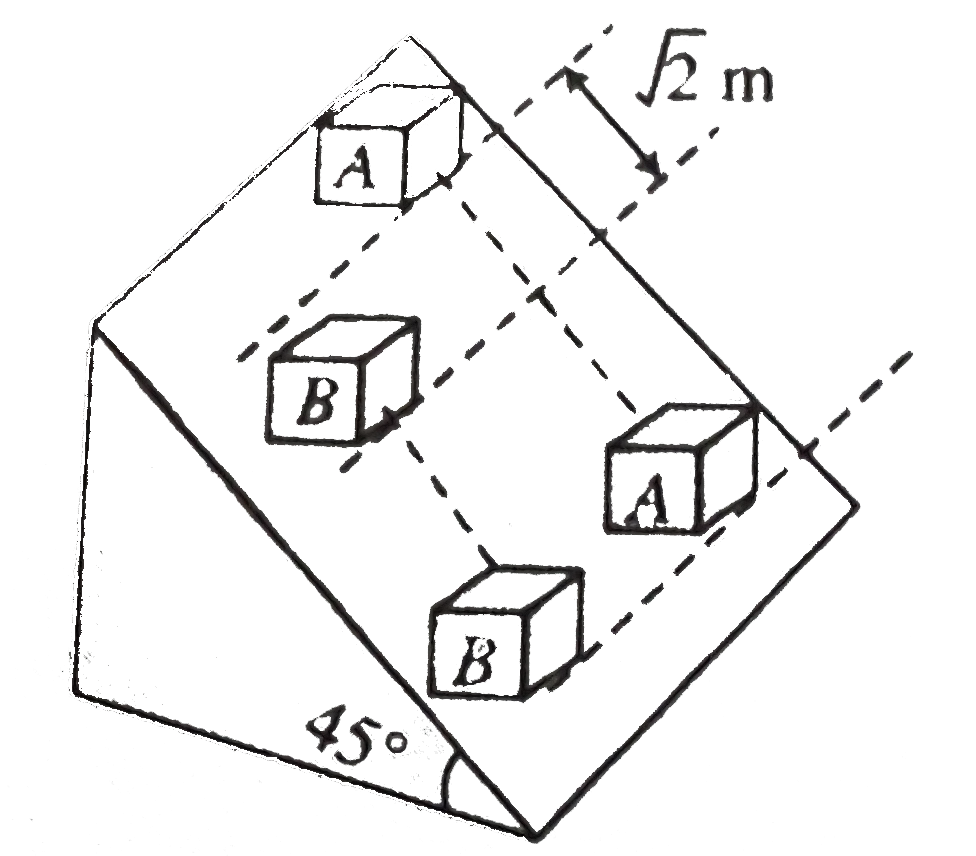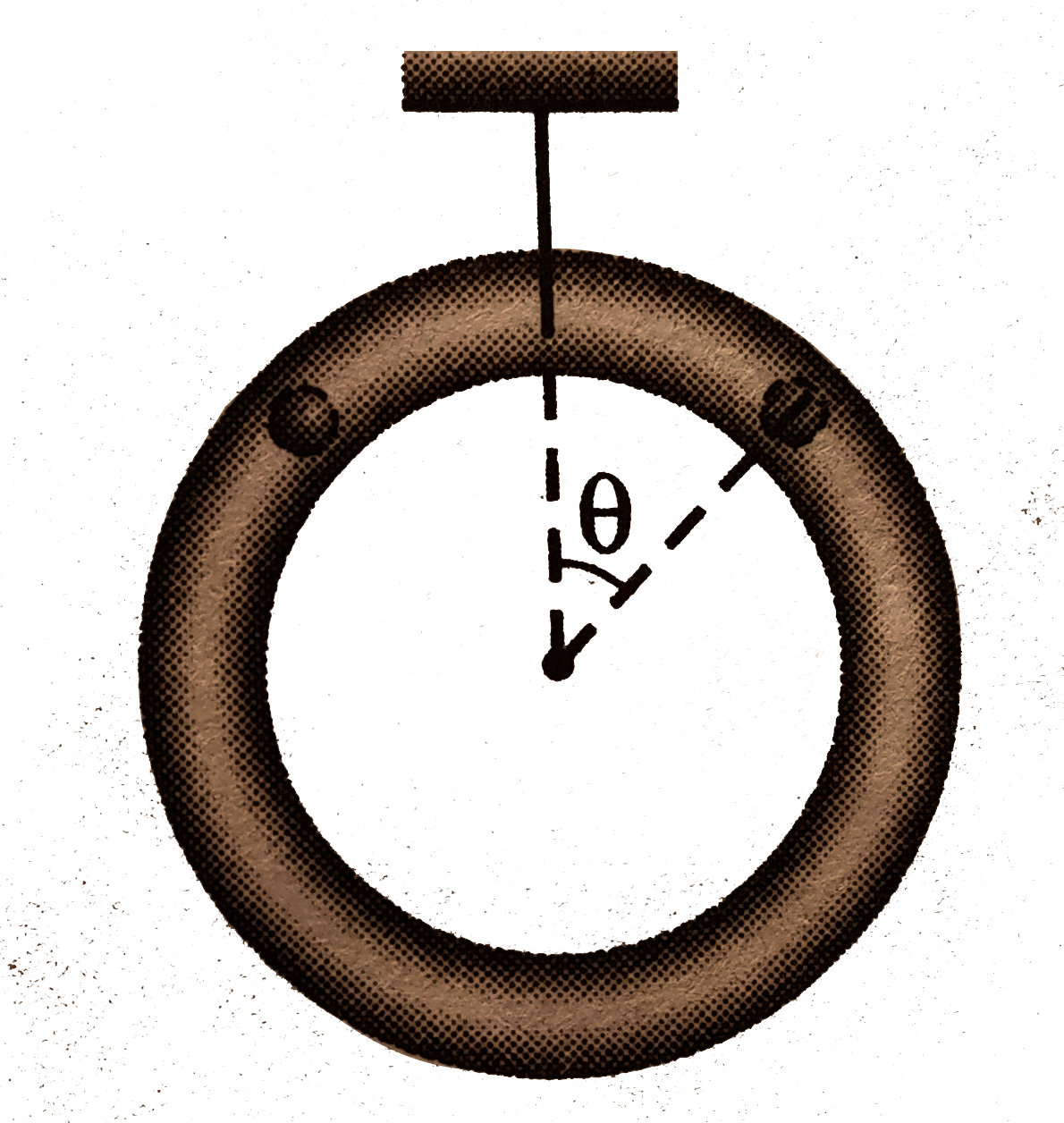A bunch of feathers and a stone of the same mass are released simultaneously in air. Which will fall faster and why? How will your observation be different if they are released simultaneously in vacuum?
Step-by-Step Solution:
1. Understanding the Scenario in Air:
- When a bunch of feathers and a stone of the same mass are released simultaneously in air, they experience different forces acting on them. The stone, being denser and more compact, will fall faster than the feathers.
2. Reason for Different Falling Speeds:
- The feathers have a larger surface area relative to their mass, which means they experience greater air resistance (or drag force) compared to the stone. This air resistance opposes the force of gravity acting on the feathers, causing them to fall more slowly than the stone.
3. Conclusion for Falling in Air:
- Therefore, in air, the stone will fall faster than the feathers due to the significant effect of air resistance on the feathers.
4. Understanding the Scenario in Vacuum:
- Now, if the same bunch of feathers and the stone are released simultaneously in a vacuum, the situation changes. A vacuum is a space devoid of air, meaning there is no air resistance acting on either object.
5. Reason for Same Falling Speed in Vacuum:
- In a vacuum, both the feathers and the stone are only subject to the force of gravity. Since they have the same mass, they will experience the same gravitational acceleration.
6. Conclusion for Falling in Vacuum:
- As a result, both the feathers and the stone will fall at the same rate and will reach the ground simultaneously when released in a vacuum.
Final Answer:
- In air, the stone will fall faster than the feathers due to air resistance. In a vacuum, both will fall at the same rate and reach the ground at the same time.
---
- When a bunch of feathers and a stone of the same mass are released simultaneously in air, they experience different forces acting on them. The stone, being denser and more compact, will fall faster than the feathers.
- The feathers have a larger surface area relative to their mass, which means they experience greater air resistance (or drag force) compared to the stone. This air resistance opposes the force of gravity acting on the feathers, causing them to fall more slowly than the stone.
- Therefore, in air, the stone will fall faster than the feathers due to the significant effect of air resistance on the feathers.
- Now, if the same bunch of feathers and the stone are released simultaneously in a vacuum, the situation changes. A vacuum is a space devoid of air, meaning there is no air resistance acting on either object.
- In a vacuum, both the feathers and the stone are only subject to the force of gravity. Since they have the same mass, they will experience the same gravitational acceleration.
- As a result, both the feathers and the stone will fall at the same rate and will reach the ground simultaneously when released in a vacuum.
- In air, the stone will fall faster than the feathers due to air resistance. In a vacuum, both will fall at the same rate and reach the ground at the same time.
Topper's Solved these Questions
- UPTHRUST IN FLUIDS, ARCHIMEDES' PRINCIPLE AND FLOATATIONBOOK - ICSECHAPTER - UPTHRUST IN FLUIDS, ARCHIMEDES' PRINCIPLE AND FLOATATIONEXERCISE - EXERCISE 5(A) (Multiple Choice Question)
3 Videos
- UPTHRUST IN FLUIDS, ARCHIMEDES' PRINCIPLE AND FLOATATIONBOOK - ICSECHAPTER - UPTHRUST IN FLUIDS, ARCHIMEDES' PRINCIPLE AND FLOATATIONEXERCISE - EXERCISE 5(A) (Numerical)
10 Videos
- UPTHRUST IN FLUIDS, ARCHIMEDES' PRINCIPLE AND FLOATATIONBOOK - ICSECHAPTER - UPTHRUST IN FLUIDS, ARCHIMEDES' PRINCIPLE AND FLOATATIONEXERCISE - EXERCISE 5(c) (Numerical)
9 Videos
- SOUNDBOOK - ICSECHAPTER - SOUNDEXERCISE - TOPIC 2 Infrasonic and Ultrasonic Waves ( 3 Marks Questions)
3 Videos
Similar Questions
Two blocks A and B of equal masses are placed on rough inclined plane as shown in Fig. When and where will the two blocks come on the same line on the inclined plane if they are released simultaneously ? Initilly the blocks A is √2m behind the block B .Coefficient of kinetic friction for the block A and B are 0.2 and 0.3 respectively (g=10ms−2)

View SolutionTwo block A and B of equal masses are placed on rough inclined plane as shown in figure. When and where will the two blocks come on the same line on the inclined plane if they are released simultaneously? Initially the block A is √2 m behind the block B. Co-efficient of kinetic friction for the blocks A and B are 0.2 and 0.3 respectively (g=10m/s2).

View SolutionIf a stone and a pencil are dropped simultaneously in vacuum from the top of a tower, then which of the two will reach the ground first? Give reason.
View SolutionIf a stone and a pencil are dropped simultaneously in vacuum from the top of a tower, which of the two will reach the ground first ? Give reason.
View SolutionTwo identical particles A and B of mass m each are connected together by a light and inextensible string of length l. The particle are held at rest in air in same horizontal level at a separation I. Both particles are released simultaneously and one of them (say A) is given speed V0 vertically upward. Choose the correct options (s). Ignore air resistance.
View SolutionAssertion : A solid sphere and a ring of same mass and radius are released simultaneously from the top of an inclined surface. The two objects roll down the plane without slipping. They reach the bottom of the incline with equal linear speeds
Reason : Decrease in potential enery for both is the same.
View SolutionTwo bodies of different masses are dropped simultaneously from same height. If air friction acting on them is directly proportional to the square of their mass, then,
View SolutionTwo bodies are held separated by 9.8m vertically one above the other. They are released simultaneously to fall freely under gravity. After 2 s the relative distance between them is
View SolutionA ring of mass 0.3 kg and radius 0.1 m and a solid cylinder of mass 0.4 kg and of the same radius are given the same kinetic energy and released simultaneously on a flat horizontal surface towards a wall which is at the same distance from the ring and the cylinder. The rolling friction in both cases is negligible. which of them will reach the wall first
View SolutionA ring of mass M hangs from a thread and two beads of mass m slides on it without friction. The beads are released simultaneously from the top of the ring and slides down in opposite sides. Show that the ring will start to rise, if m>3M2

View Solution
